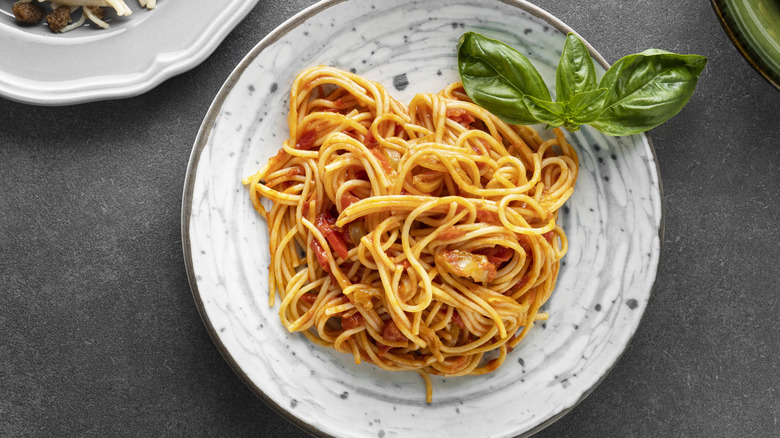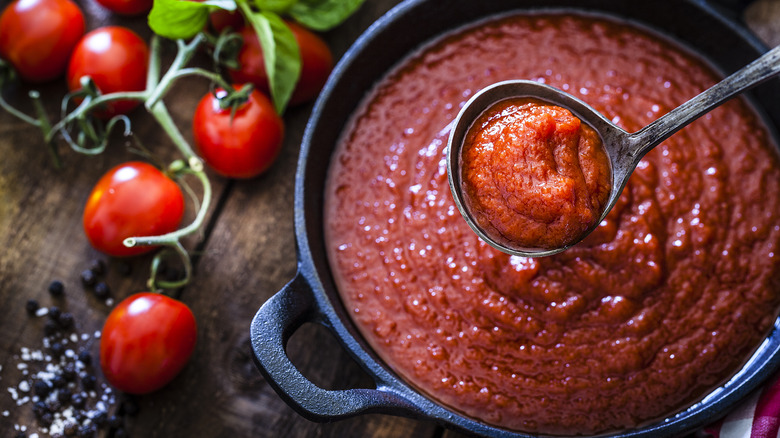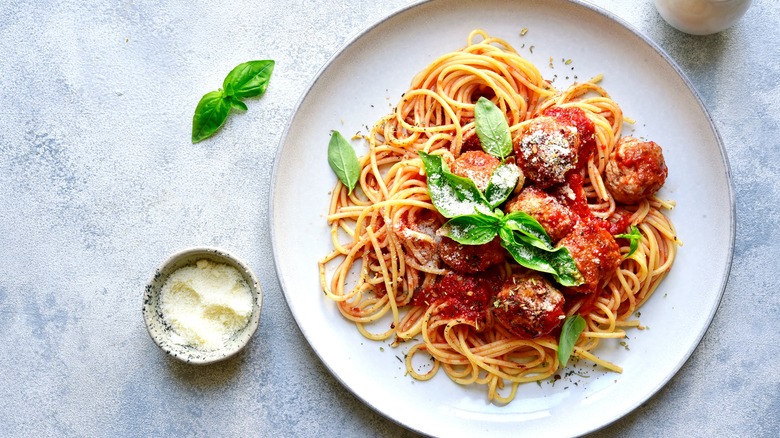The Simple Mistake That Ruins Marinara Sauce
When you think of chicken parm or a bowl of spaghetti, you're likely thinking they're topped with the same tomato-based sauce — a blend of tomatoes and seasonings, plus a little olive oil, garlic, and maybe some basil. While you're not totally wrong, you might be surprised to learn that not all tomato sauce is created equal. Pasta is often paired with marinara sauce, which is a much quicker version of that long-simmered, thick tomato sauce you might find on top of chicken or veal parm.
When it comes to making the perfect marinara, there is one simple mistake to avoid: don't simmer the sauce for too long. That's because in this variation of red sauce, fresh tomatoes are key to producing the best flavor. Even though you can use canned tomatoes for this dish (and that's actually pretty common), fresh refers to making sure the tomatoes keep the integrity of their initial flavor rather than turning them into something that's been simmered for hours, thickened, and completely altered.
Avoid overcooking marinara sauce
When cooking marinara sauce, you want to maintain the integrity of the tomatoes. For that reason, don't cook the sauce for more than 20 minutes. As the tomatoes heat, they break down and the sauce loses moisture, resulting in a thicker sauce with a different flavor. Since marinara's flavor comes from that bright, acidic tomato taste and it's supposed to be on the thinner side, simmering the sauce for hours will change it into something completely different.
The jury is still out on the best tomatoes to use for sauce — canned or fresh — but there is more flavor consistency in canned tomatoes (you won't have to guess if they're ripe or not). And since they're often canned with added salt, they have plenty of flavor right from the start of the cooking process. For something like marinara, which you don't give much time to cook, using canned tomatoes might actually be the better option.
Marinara doesn't have the flavor depth of other sauces
The quick simmering time certainly plays a role in marinara's overall flavor, but that's because it's supposed to be a light, bright sauce. A basic, traditional recipe also has few ingredients: only tomatoes, olive oil, and garlic. Other add-ons for flavor are welcomed, like chili flakes or fresh basil, but not necessary. And of course, salt is an essential seasoning. But high-quality tomatoes are the be-all-end-all of the dish, so not much else is needed — plum tomatoes are recommended, such as San Marzano tomatoes or Roma.
Texture plays a role in marinara sauce, too. It's often left chunky, rather than other tomato sauces that might be blended until smooth. Those tomato chunks help embellish that fresh tomato flavor, and it's all the more reason to use canned crushed tomatoes; they're already crushed to just the right texture. If you want to make homemade marinara at home, pour it over spaghetti, or use it as a dipping sauce for mozzarella sticks or calzones.


